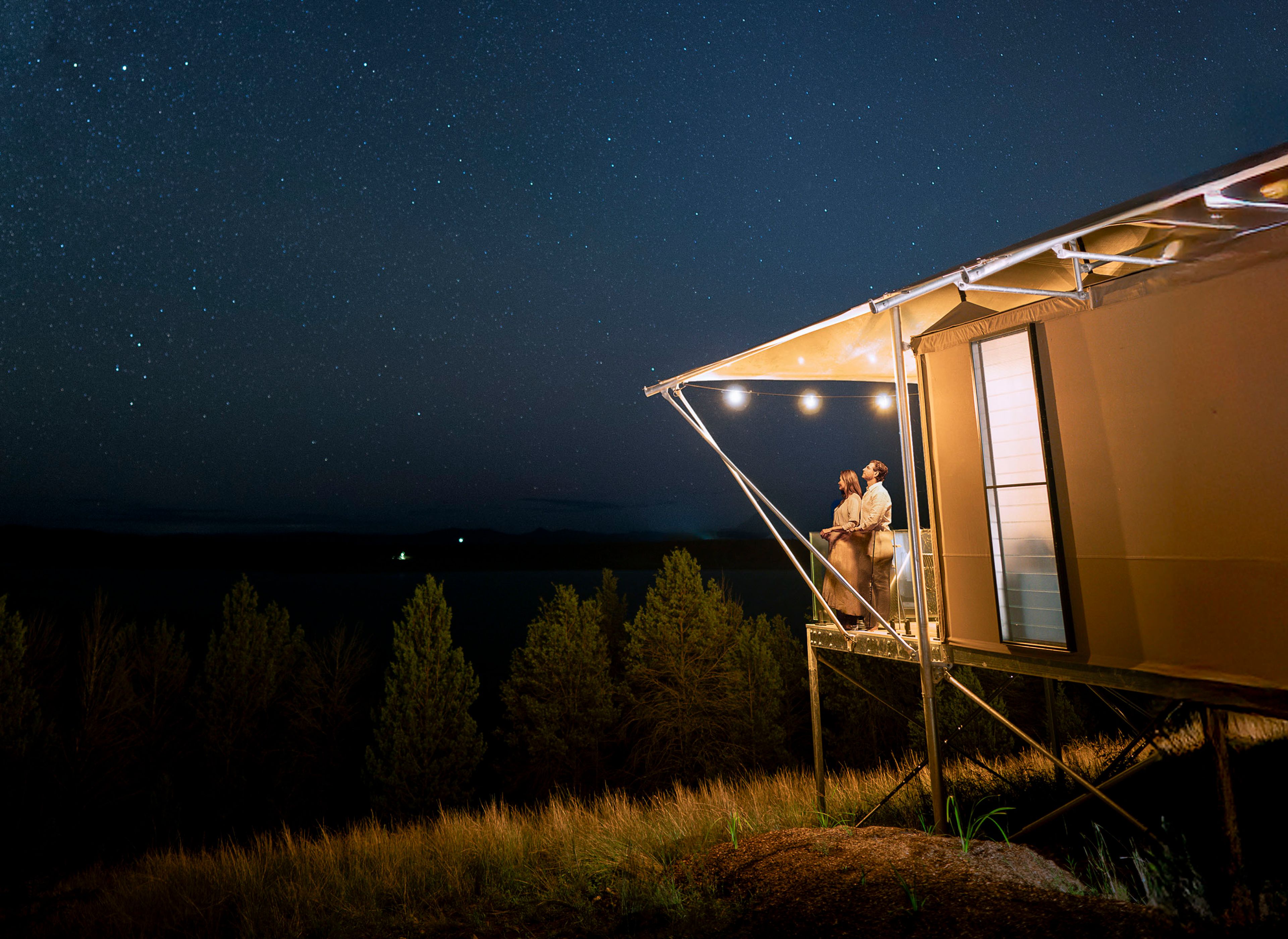Lake Keepit Celestial Calendar for 2025

There is something about the absence of noise, when standing on your private balcony at Wilderluxe Lake Keepit, that brings a quiet to your soul. There is something more about the lack of artificial lights surrounding this epic destination, that naturally brings your eyeline up to take in one of nature's best light shows in the world!
Yes, the star-gazing from Lake Keepit is second to none. And we have your celestial calendar right here.
Lunar eclipses & supermoons seen from Lake Keepit
- 7-8 September - Total Lunar eclipse
- 21/22 September - Partial solar eclipse
- 5 November - Supermoon
Which planets can be seen from Lake Keepit?
- August - Venus, Jupiter and Saturn visible
- 19 August - best morning to see Mercury
- 21 September - Saturn at opposition
- 23 September - Neptune at opposition
- 24 September - Moon and Mars visible
- 30 October - Best evening to see mercury
- 21 November - Uranus at opposition
Meteor showers visible from Lake Keepit
- May - Eta Aquariids meteor shower
- 21-22 October - Orionids meteor shower
- 17-18 November - Leonids meteor shower
- 14-15 December - Geminids meteor shower
Phases of the moon (full moon)
- 12 February
- 14 March
- 13 April
- 13 May
- 11 June
- 11 July
- 9 August
- 8 September
- 7 October
- 5 November
- 4 December
Equinoxes & Solstices
- 23 September - September equinox
- 22 December - December solstice
Your celestial dictionary:
- Supermoon: A full moon appearing larger and brighter when closest to Earth
- Eclipse: an astronomical event that occurs when one celestial body moves into the shadow of another, temporarily blocking its light
- Lunar eclipse: When Earth’s shadow falls on the Moon, darkening it
- Solar eclipse: Meteor shower: a celestial event where numerous meteors — caused by Earth passing through a comet’s trail of debris — streak across the night sky, appearing to radiate from a specific constellation.
- Planet at opposition: When a planet is directly opposite the Sun in the sky, brightest and easiest to see
- Equinox: When day and night are equal length (March and September)
- Solstice: Marks the longest day (summer) or shortest day (winter) of the year
Tips for star-gazing
For the best experience, bring along a blanket or reclining chair so you can comfortably lie back and take it all in. A red-light torch is ideal for moving around without disturbing your night vision, and stargazing apps can help you identify constellations and planets in real time. And if you’re lucky enough to visit during a meteor shower, give your eyes 20-30 minutes to adjust, you’ll be amazed at how much more you can see.

Ready to get a little closer to the stars?
Wilderluxe Lake Keepit offers a chance to take in the stars like no other. Far from city lights, on a cloudless night, the sky is lit up with an array of stars. Don’t forget to take advantage of the telescopes provided at Wilderluxe for an even closer look at distant stars and planets.
Your telescope and some epic skies await at Wilderluxe Lake Keepit - the perfect way to wind down after a day of exploring local events and things to do near Lake Keepit